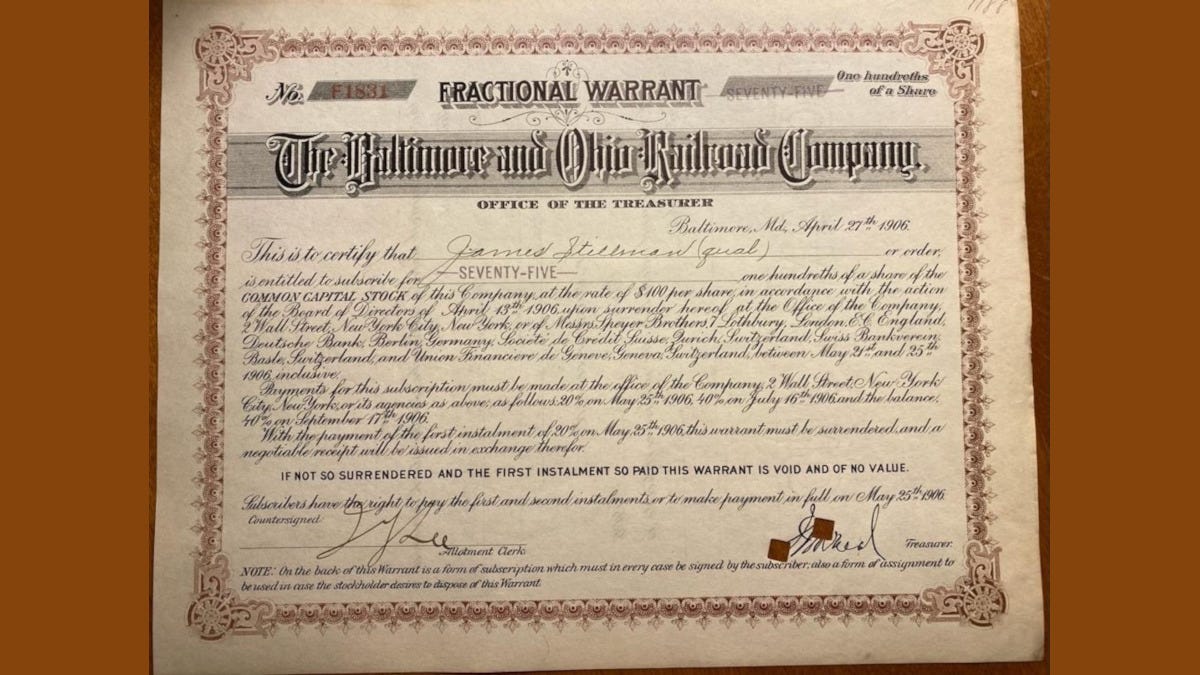How Warrants Work
Warrants are useful currency for issuers but potentially dilutive to shareholders
A warrant gives its owner the right to order a company to issue a new share. In addition, it gives the owner the right to buy the newly issued share at a predetermined price. If the issuer has registered the underlying share with the SEC, the owner can immediately sell the newly issued share on the public market. Obviously, he’ll want to do so only if the market price is more than he paid for the share.
If you’re familiar with options, you may have surmised that a warrant is similar to a call option, which gives its owner the right to buy a share of stock at a predetermined price on a predetermined date. The main difference is that the owner of a call option buys a share on the secondary market. A warrant holder, by contrast, buys a newly issued share directly from the issuer.
A warrant doesn’t generate any proceeds for the issuer until the holder exercises the warrant. By exercising a warrant, we mean exercising the right to order the issuer to issue a new share and sell it at the predetermined price (the exercise price). Companies often issue warrants as a form of payment for services or as an inducement to buy other securities.
Warrant as currency
For example, a young company without a lot of cash may offer to pay a law firm for its services with warrants. Or, instead of offering to sell only newly issued shares to investors, a company may offer to sell units, each of which consists of one newly issued share and one warrant to buy an additional newly issued share at a predetermined price under certain conditions.
A warrant has not only an exercise price but also a limited period of time during which it is exercisable. For example, a company may choose to issue warrants that are exercisable at $6.00 per share for three years beginning six months from the date of issuance. If the owner hasn’t exercised the warrant by the end of the three-year period, the warrant expires worthless.
A party who accepts warrants as consideration for something of value is assuming some risk. She may incur a loss if the warrants expire without the underlying stock’s market price ever exceeding the warrants’ exercise price. Adding insult to injury, she may be forced to exercise on the last day before expiration when the stock is trading one penny above the warrants’ exercise price.
Cashless exercise
Warrants are of limited value if the holder can’t resell the shares underlying them. Therefore, warrants usually come with registration rights that require the issuer to file a registration statement for the underlying shares with the SEC within a certain period of time. However, the issuer has little control over when or whether the SEC declares a registration statement effective.
If a registration statement is not effective by a certain date, many warrants allow a process called cashless exercise, which converts the warrants into a quantity of shares determined by a formula. The formula typically takes into account the difference between the exercise price and the market price at the time of the cashless exercise. Until the shares are registered, they have the same restrictions against resale as the warrants.
An issuer, too, assumes some risk when it issues warrants. The instruments obligate an issuer to sell new shares at a discount to their market price, which can cause dilution for shareholders and make it difficult for the issuer to raise additional capital. To mitigate such risk, an issuer may specify a holding period that must elapse before a warrant becomes exercisable. If the issuer’s valuation increases during the holding period, the incremental value may offset the effects of dilution when the holder exercises.
Mandatory exercise
In addition, an issuer runs the risk of never receiving any proceeds from warrants that expire. Therefore, an issuer may specify mandatory exercise rights under certain conditions. For example, if the underlying stock’s daily closing price is higher than the warrant’s exercise price by 20% or more for 10 consecutive trading days, the issuer may have the right to force the exercise of the warrants. If the market price suddenly falls below the exercise price on the eleventh day, the warrant holder is simply out of luck.
Secondary markets for registered and unregistered warrants exist. Most unregistered warrants can be transferred between private parties, subject to applicable laws. Issuers can file registration statements for warrants with the SEC and list warrants on securities exchanges alongside their underlying shares. Warrants are delisted once they’re exercised or expired.
In future articles, we’ll examine other potentially dilutive securities with which warrants are often bundled in offerings, such as convertible notes, convertible debentures, and convertible preferred shares.




